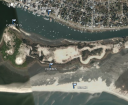Wesley Freyer was one of quite a few presenters at the Learning 2.0 conference at the Concordia International School Shanghai, Pudong 201206, Shanghai held in September of this year. Wesley podcasted one of Alan’s sessions called: Creating globally connected, rigorous and highly motivated assignments. This podcast is worth listening to as it is 1 hour and 10 minutes long. I have listened to it twice already as I am scribing some of the topics so I can write about them here. I would love for all teachers to hear this podcast as I think it will challenge us to think in new ways.
As a co-chair of the Technology Task Force at Durham Academy that is charged with developing a 5-year plan for technology, it is the thinking and writing of many of the folks who presented at this conference that have influenced my suggestions. While I have not heard Alan speak in person, I do want to attend his November Learning Series of workshops someday. Wesley, Jamie McKenzie and Will Richardson are folks who I have had the pleasure of hearing in person. All are dynamic and would be great folks to have come to Durham Academy to help us map our future and our current as well. David Warlick would also be good and he is in Raleigh. However, it is Alan that interests me the most as he is a speaker who has consistently pushed me in my thinking and challenged me in ways that I both dislike and know I need to grow. The sign of a great teacher.
Topics he brings up in this podcast that are of critical importance are:
Grammar of the Internet: The information today is too much! Most of it is messy or as Alan states: Misleading, Overwhelming and Ill conceived. Alan affirms that teachers are great at putting together well conceived information. The trouble today is that our students have access to growing amounts of ill conceived information so we must teach them how to organize it. We need to teach them the syntax, grammar and punctuation. Check out his Grammar of the Internet to learn more. Take the Quiz and then work on the follow-up activities.
Legacy and Publishing for a Global Audience: “Students from 3rd grade on should be taught the rigors and discipline of writing an encyclopedia article”. In addition, they should publish it in wikipedia or other online wiki resource. Good news is that some of our students are already doing this with in our DAILE Moodle. 5th graders have worked on a CSI wiki while 3 7th grade students have worked on creating a metric wiki for their Science class. The Pitot House is an example of an elementary classes work. Our students need to be writing in wikis so hats off to those teachers who are starting to do this skill. In fact, I will wager that in the future, students will use wikis more then they will use application based word-processing software. Not much of a statement, when you realize that most already are doing it, just not in school.
Problem Solving Process: Schools should have a set of problem solving process that is known by all learners and is used across the curriculum. What is ours? Is it Big 6?
Give it a listen and see if you are motivated to seek change. You can listen to it on the web or in iTunes
I liked his comment: “Teachers do not need to know how to podcast, they need to know WHEN to podcast”.



